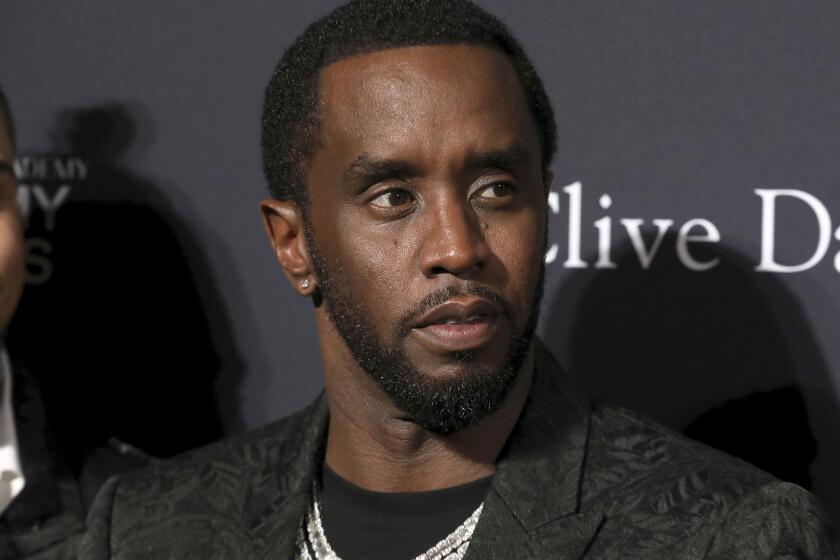A dark side of Norah Jones
Mention that Norah Jones has a new record and most likely an aural picture emerges. Maybe it’s a hazard of success or having such a recognizable, lightly sanded voice, but after she took home five Grammys for the nearly inescapable “Come Away With Me” in 2003, Norah Jones’ particular brand of song craft became synonymous with an understated, ballad-friendly sound that was always tasteful but sometimes a bit unobtrusive.
“If there was no Adele or Norah, what would they play in coffee shops and hotels?” one prominent jazz musician playfully asked on Twitter last month, pairing two runaway Grammy winners of the last 10 years. Yet this perception overlooks that Norah Jones has been steadily moving away from the sultry, nocturnal atmosphere of her previous records.
The daughter of sitar great Ravi Shankar, Jones exploded out of the New York City jazz scene in the early ‘00s and built a steady career on albums that elegantly nodded toward jazz, country and pop in a manner that merged well with public spaces seeking a hip (but not too hip) backdrop.
But a shift began coming into focus in 2009 with “The Fall,” which took Jones into a more shuffling, rock-oriented direction with guest turns from indie heroes Ryan Adams and Okkervil River’s Will Sheff. Her new album, “Little Broken Hearts,” released Tuesday, goes a significant step further with the help of uber-producer Danger Mouse (a.k.a. Brian Burton), whose eclectic, funk-dusted touch has been heard with Gnarls Barkley, Broken Bells and the Black Keys. Though layered with curious sounds and effects, Jones emphasizes the recording’s acoustic roots, so this effort is far from a dance or electronic record. It is, however, her most intriguing listen.
With Burton credited as co-writer, “Little Broken Hearts” feels like a welcome left turn, right down to its seductive, Russ Meyer-evoking cover art. But Jones doesn’t see it that way. “I always try to do something different,” Jones said, speaking by phone from New York City. “I don’t think I’ve made the same record over and over. I think I’ve made a pretty natural evolution to this point.
“So for me, this doesn’t seem so crazy,” she added with a laugh.
Jones first joined Burton on his lush 2011 album, “Rome,” an imaginary soundtrack teamed with composer Daniele Luppi steeped in the Ennio Morricone-scored spaghetti westerns of the ‘60s and ‘70s. Though Burton was said to be in the studio and unavailable for interviews, he’s previously described Jones as his first choice for the icily detached female vocal counterpoint to that record’s other high-profile guest, Jack White.
Inspired by the experience, Jones asked if they could work together again on her next album.
“[Burton] said it would be fun to go in with nothing and just kind of write from scratch and play a bunch of instruments ourselves,” Jones explained, adding this was his method while recording with the Shins’ James Mercer on Broken Bells, whose electro-pop flourishes share a sonic lineage with “Little Broken Hearts.” Though Jones said one of the most freeing aspects of the album was going into its sessions with no expectations, Burton had a direction in mind.
“In the beginning Brian asked me if I was into making a dark album, and I think I was kind of surprised by that,” Jones said. “But I also wasn’t closed to anything.... He loves that mood, so you put him in a room with me who likes ballads and quiet music -- I think the combination works.”
The result is certainly dark, with many of the lyrics chronicling the shattered aftermath of a breakup, something Jones recently went through herself with the end of her relationship with musician Lee Alexander, who worked with Jones on her first three albums. (The two still work together on Jones’ country-tilted side project the Little Willies, which also released an album in January.)
With Burton’s spacey burbles and echoes shadowing her every move, Jones can sound achingly heartsick for much of “Little Broken Hearts,” as on “She’s 22,” where a lonely guitar shuffles behind her plaintive refrain of “Does she make you happy?”
But there’s also room for upbeat, R&B-leaning; sass with the irresistible “Say Goodbye” and debut single “Happy Pills,” which features a spectral echo of voices along its heavy-footed rhythm. In maybe the record’s biggest departure, Jones delivers a spare murder ballad on “Miriam,” which finds her stalking an unfaithful lover and making the line “I’m gonna smile when I take your life” sound sinister yet weirdly sweet.
When asked if she was worried about perhaps letting too much of her private life show in a breakup album that quickly starts sounding personal, Jones waved off such concerns. “People will read into what you say no matter what, so it doesn’t matter to me. I know what’s real, what’s encrypted in there and what’s not,” she said.
The alchemy from teaming with another artist is a recurring theme for Jones, who has a history of sometimes unexpected collaborations.
A 2010 Blue Note compilation “... Featuring” showcased Jones’ turns ranging from her early recordings with jazz guitarist Charlie Hunter to subsequent meetings with Willie Nelson, Foo Fighters, Q-Tip and Adams, whom Jones pointedly cited as a friend and encouraging force as the two have appeared on each other’s albums over the years.
“When I hear a song Norah is singing or playing on, I can hear her spirit and her soul very clearly,” Adams wrote in an email to The Times. “There is an elegance to how guarded she is in her timing, and there are a lot of dimly lit corridors in her musical passages. It’s a lovely trap she sets for the listener. Also, you would never mistake her for someone else or someone else for her.... I adore that.”
“When Norah is around, she is the boss, so if we write a song or simply sit down to play I am allowed more than ever in my life to be a spazz and basically go lazercat with lyrics and ideas,” Adams said of their collaborative process. “Because ultimately she is just gonna eventually say, ‘OK, here’s what we’re gonna do.’ ”
“It’s fun to peek into other people’s worlds and see how they go about doing things,” Jones said, adding that she wasn’t yet sure where her muse would take her next -- stylistically or collaboratively. “I would love to make a real jazz album someday because I never have,” she said, which may be a surprising admission for those eager to pin her to a single genre as a result of her longtime relationship with Blue Note Records. “But that’s something I’m not in a rush to do,” she added.
Jones kicked off a tour this month with a show at Staten Island’s Snug Harbor that quickly sold out. She’ll play the Santa Barbara Bowl on Aug. 7 and Hollywood Bowl on Aug. 12.
Though “Little Broken Hearts” marks a different tack for Jones, some fans will always see her as that longhaired, supple-voiced young woman cradling an armload of Grammys. Jones said she “felt a little bit” for Adele after watching the singer experience a similar night at this year’s awards. It was a scene that certainly brought back memories.
“It was amazing but definitely a little stressful to be in the eye of that storm,” she said. “It was fun to experience, and it’s fun to look back on.
“And then sort of get out of,” Jones added with a chuckle.
--











